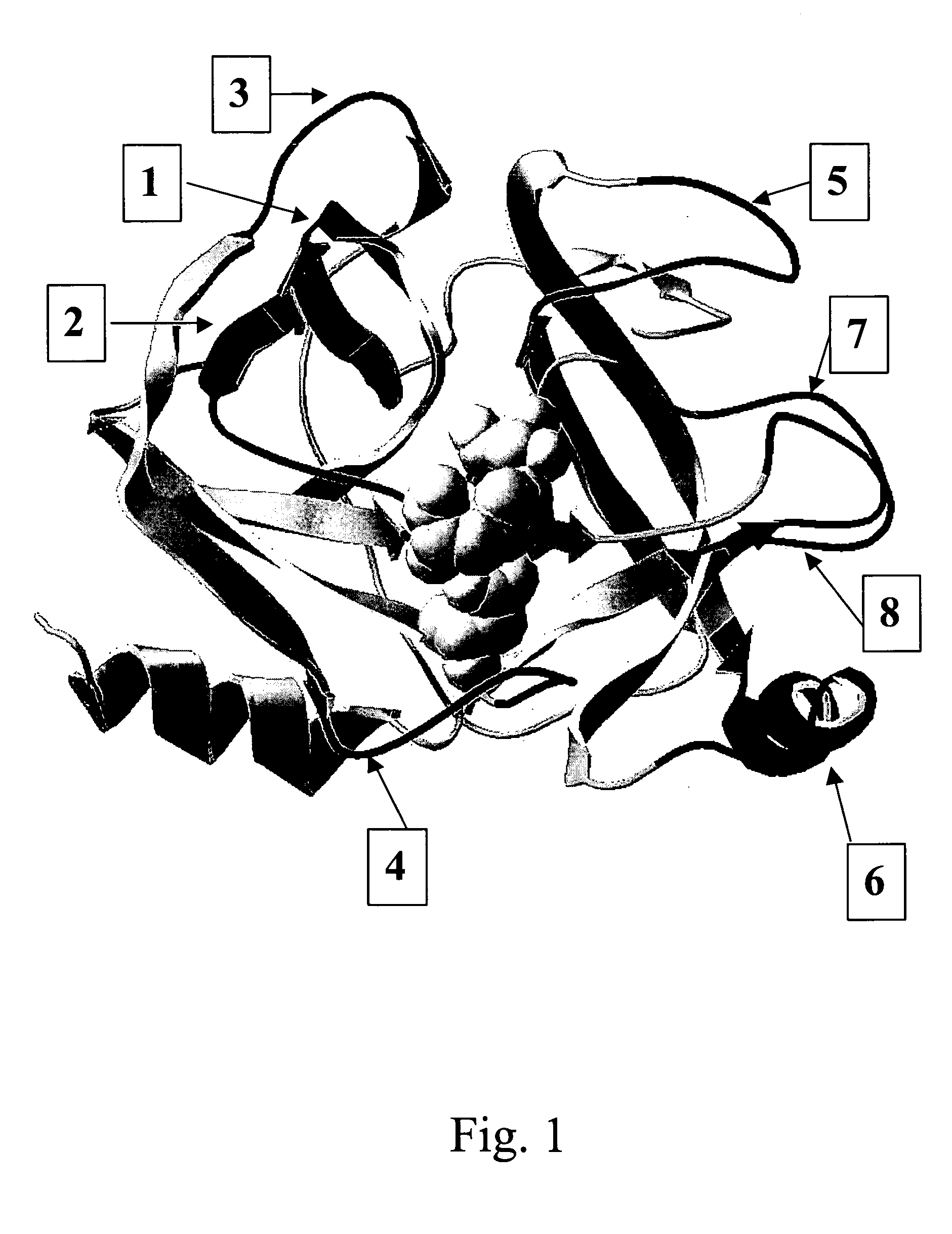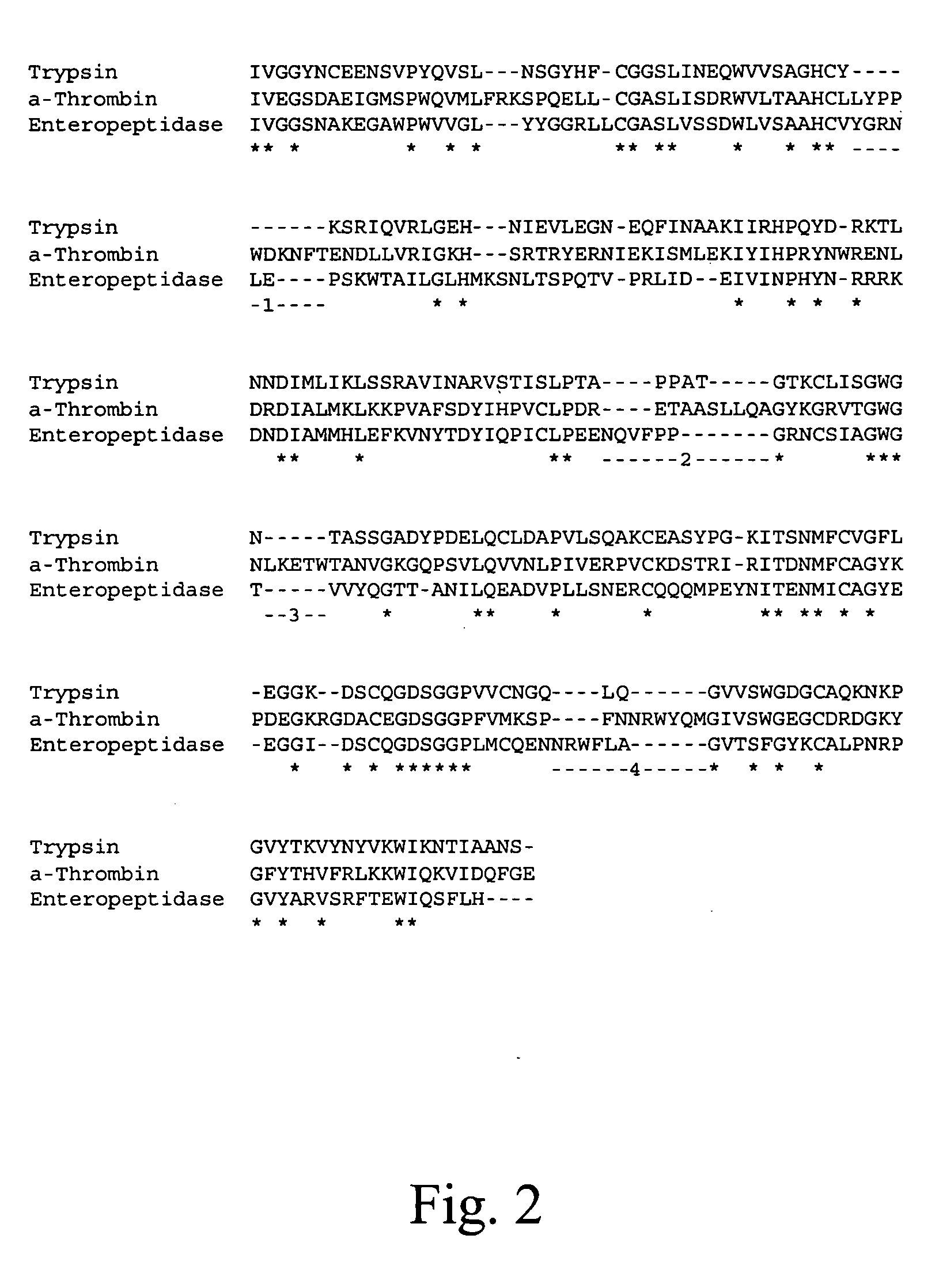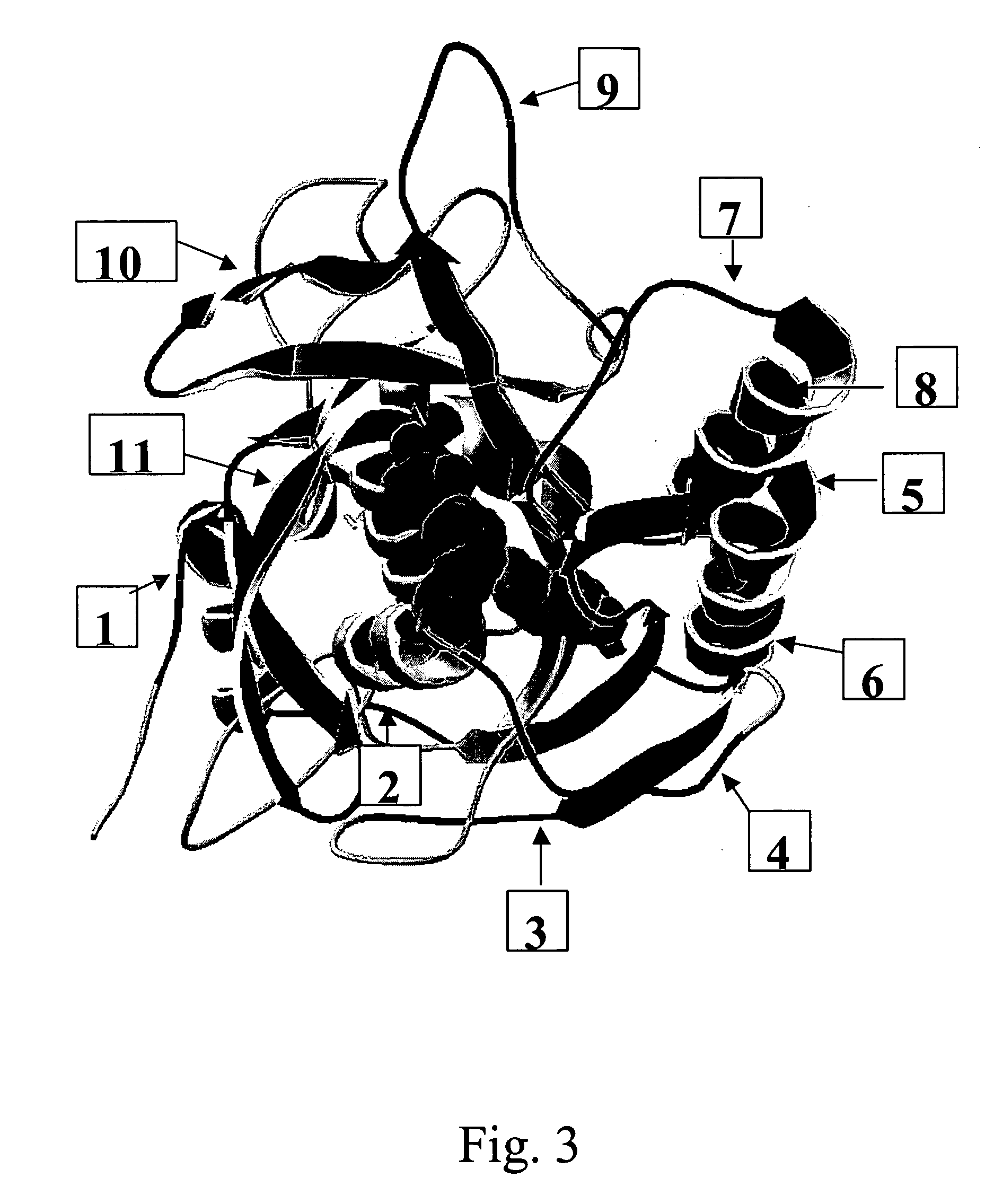Biological entities and the pharmaceutical and diagnostic use thereof
a technology of biological entities and diagnostics, applied in the field of biological entities and the pharmaceutical and diagnostic, can solve the problems of inability to find nutritional or industrial applications, limited use of such enzymes with high, low or any defined specificity, and potential immunogenicity, and achieve the effects of increasing the half-life of engineered proteases, increasing local concentration, and increasing the interaction between proteases and targets
- Summary
- Abstract
- Description
- Claims
- Application Information
AI Technical Summary
Benefits of technology
Problems solved by technology
Method used
Image
Examples
examples
[0346] In the following examples, materials and methods of the present invention are provided including the determination of catalytic properties of enzymes obtained by the method. It should be understood that these examples are for illustrative purpose only and are not to be construed as limiting this invention in any manner. All publications, patents, and patent applications cited herein are hereby incorporated by reference in their entirety for all purposes.
[0347] In the experimental examples described below, standard techniques of recombinant DNA technology were used that were described in various publications, e.g. Sambrook et al. (1989), Molecular Cloning: A Laboratory Manual, Cold Spring Harbor Laboratory, or Ausubel et al. (1987), Current Protocols in Molecular Biology 1987-1988, Wiley Interscience. Unless otherwise indicated, restriction enzymes, polymerases and other enzymes as well as DNA purification kits were used according to the manufacturers specifications.
example i
Identification of SDR Sites in Human Trypsin
[0348] Insertion sites for SDRs have been identified in the serine protease human trypsin I (structural class S1) by comparison with members of the same structural class having a higher sequence specificity. Trypsin represents a member with low substrate specificity, as it requires only an arginine or lysine residue at the P1 position. On the other hand, thrombin, tissue-type plasminogen activator or enterokinase all have a high specificity towards their substrate sequences, i.e. (L / I / V / F)XPR{circumflex over ( )}NA, CPGR{circumflex over ( )}VVGG and DDDK{circumflex over ( )}, respectively. The primary sequences and tertiary structures of these and further S1 serine proteases have been aligned in order to determine regions of low and high sequence and structure homology and especially regions that correspond to insertions in the sequences of the more specific proteases (FIG. 2). Several regions of insertions equal or longer than 3 amino ac...
example ii
Molecular Cloning of the Human Trypsin I Gene to be Used as Scaffold Protein and Expression of the Mature Protease in B. subtilis
[0349] The gene encoding the unspecific protease human trypsinogen I was cloned into the vector pUC18. Cloning was done as follows: the coding sequence of the protein was amplified by PCR using primers that introduced a KpnI site at the 5′ end and a Bam-HI site at the 3′ end. This PCR fragment was cloned into the appropriate sites of the vector pUC18. Identity was confirmed by sequencing. After sequencing the coding sequence of the mature protein was amplified by PCR using primers that introduced different BglI sites at the 5′ end and the 3′ end.
[0350] This PCR fragment was cloned into the appropriate sites of an E. coli-B. subtilis shuttle vector. The vector contains a pMB1 origin for amplification in E. coli, a neomycin resistance marker for selection in E. coli, as well as a P43 promoter for the constitutive expression in B. subtilis. A 87 bp fragment...
PUM
| Property | Measurement | Unit |
|---|---|---|
| concentration | aaaaa | aaaaa |
| pH | aaaaa | aaaaa |
| pH | aaaaa | aaaaa |
Abstract
Description
Claims
Application Information
 Login to View More
Login to View More - R&D
- Intellectual Property
- Life Sciences
- Materials
- Tech Scout
- Unparalleled Data Quality
- Higher Quality Content
- 60% Fewer Hallucinations
Browse by: Latest US Patents, China's latest patents, Technical Efficacy Thesaurus, Application Domain, Technology Topic, Popular Technical Reports.
© 2025 PatSnap. All rights reserved.Legal|Privacy policy|Modern Slavery Act Transparency Statement|Sitemap|About US| Contact US: help@patsnap.com



